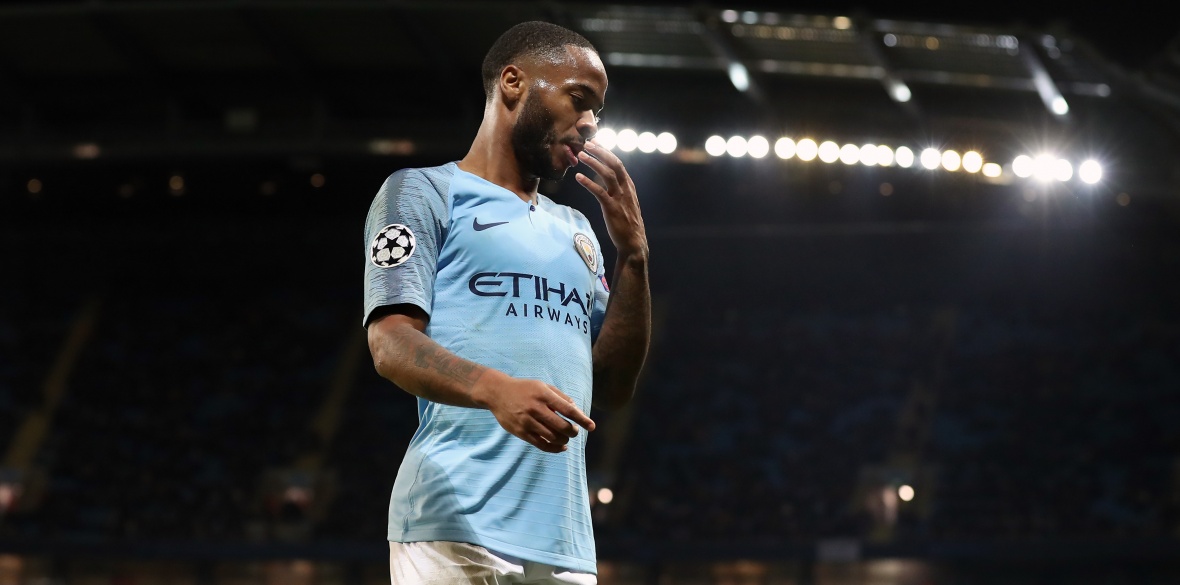This is the last article you can read this month
You can read more article this month
You can read more articles this month
Sorry your limit is up for this month
Reset on:
Please help support the Morning Star by subscribing here
Last weekend, the Premier League offered us hope that the title race is far from a forgone conclusion just yet as Manchester City lost to Chelsea — beaten convincingly for the first time this season.
But the very game that fostered this renewed excitement was overshadowed by a particularly ugly off-the-field incident at Stamford Bridge.
As Raheem Sterling recovered a dead ball to tee up a corner-kick, the 24-year-old received a shocking tirade of abuse from opposition fans in the front row of the Mathew Harding lower tier. The outburst was captured by television cameras and broadcaster BT Sport stated they were passing the footage to the relevant authorities. Before the day was out, the Metropolitan Police, as well as Chelsea Football Club, had begun separate investigations after receiving reports of racial abuse directed at the City forward.
A look at the evidence will be a familiar sight to anybody used to watching or attending football. It is a sad reality that some spectators eagerly assume this angry-mob identity and incessantly hurl swear words and insults at opposition players whenever they’re forced into earshot. The presence of racist language in this outburst has been cause for extra concern in a week that also saw a banana aimed at Arsenal’s Pierre-Emerick Aubameyang.
Whether a professional lip-reader can 100 per cent deduce from this footage that, as it appears to the untrained eye, one man exclaims: “You black cunt,” may be the ultimate question in terms of bringing a legal prosecution.
However, the episode has led to a wider debate about the abuse footballers are forced to endure while they go about their jobs. Racially motivated or not, this type of behaviour has no place in 21st century Britain, especially in one of our greatest cultural exports that we so often laud as a remarkable success story since the sport’s supposed sanitisation post-1980s.
Proving this incident to be racially aggravated could be tricky as the suspect will argue he said any manner of things besides the racially directed spew that it appears to be. This will frustrate anti-racism campaigners as compelling evidence such as this is so often hard to come by.
For the football authorities though, there is no such burden of proof to ascertain the exact wording. Necessity dictates that every fibre of their being is directed at identifying this loon and ensuring he faces appropriate consequences for his actions such as a life ban. Only after taking tough action like this can they assure fans they’re stamping out the ugliest aspects of our beautiful game.
If indeed, this is “everyone’s game,” as was so proudly and vociferously proclaimed by the Premier League’s Rainbow Laces campaign last weekend, then why are the core figures in the game — the players — not offered more protection?
These are times when so much importance is placed on good mental health and creating the right atmosphere for this. So at what point is having any number of hysterical grown men spraying bile and hatred at you — because not only do you have the nerve to represent a rival football team but also you do so with guile and quality — considered a fundamental health and safety hazard?
Sterling, whose composed initial response to the abuse was praised, took to social media on Sunday to refocus the issue. “I just had to laugh. I expect no better,” he said.
He then compared the media coverage of two of his young City teammates, one black and one white, by the same newspaper on a similar story, suggesting the type of foul-mouthed episode he experienced on Saturday was directly linked to the racially prejudiced media climate.
The striker received considerable negative headlines before the World Cup over his choice of tattoo. It led many of his supporters to ask whether he was being unfairly singled out because of the colour of his skin.
It’s highly commendable of Sterling, not to mention — ironically — indicative of an impressive grasp of media manipulation for his own benefit, that he has forced this issue onto the mainstream agenda.
Naturally, Piers Morgan has jumped to the defence of his beloved tabloid industry, rubbishing the notion of underlying, conscious or otherwise, racial bias within the media. Henry Winter, another journalist, was quick to counter Morgan’s claims, though, suggesting Sterling may have a point.
A lack of diversity in the sports media is undoubtedly a key factor in the skewed coverage that is so prevalent in many reports. The Black Collective of Media in Sport (BCOMS) has conducted research that shows that the BAME population, while proportionally over-represented in professional football, are considerably under-represented in the media.
For example, just one journalist of BAME background was sent to the 2018 World Cup by national newspapers, despite over half of the England squad being BAME.
In a statement, BCOMS said: “We stand with Raheem Sterling and thank him for raising the issue of how the media portrays black footballers and communities across the country.”
It may seem erroneous for two white middle-aged journalists to pass judgment on whether the sports media is inherently prejudiced or not, but it is a token of the credibility the debate has taken on that this is now a front-and-centre issue for Britain’s media to confront.
The behaviour exhibited by that feral abuser at Stamford Bridge is exactly what right-minded people have campaigned for years to kick out of the game. Now it’s high time that objective came to pass.











